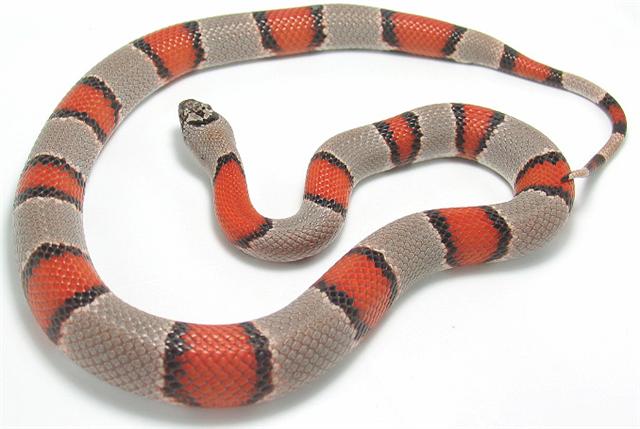Kingsnake - Grey Banded
Grey Banded Blairs Kingsnake, Grey Banded Alterna Kingsnake, Grey Banded Kingsnake Scientific Name: Lampropeltis alterna
Tue, 8th April, 2025 - 5:45 pm GMT
Sponsor Ads:

Alternative Name
Grey Banded Blairs Kingsnake, Grey Banded Alterna Kingsnake, Grey Banded Kingsnake Scientific Name: Lampropeltis alternaBasic Info
The Florida Kingsnake averages between four and five feet (120-150cm), although they often reach up to six feet. They are usually black or brown, with bands of cream or yellow. The background color usually fades as the snake matures. In southern Florida a variant known as the South Florida Kingsnake, or Brooksi, can be found. This variety usually exceeds five feet and is paler than other varieties. Another variety, found only in Northern Florida, is the Blotched King Snake or Goini. These snakes are characterized by blotched, rather than banded, markings, however, they can also have stripes or no pattern at all.
Health
Some specimens, particularly wild-caught Grey Bands, seem to prefer lizards. Avoid feeding lizards when possible, as they may transmit disease or parasites to your snake. Breeding Gray Banded Kingsnakes will brumate from between September and November until March or April. They should begin coupling in either April or May. Females will lay four to six eggs and the incubation period will last 62 - 75 days. Eggs should be incubated at 80 to 86 degrees Fahrenheit. Females will lay eggs during June. They may lay as many as 15 eggs, though 3 to 10 is normal. Their eggs are leathery and measure between 30 and 40 mm in length.Habitat
Most often spotted in dry, arid desert environmentsBehavior
They are most often spotted in dry, arid desert environments, feeding on rodents and lizards during daylight hours. They are commonly kept as pets and are relatively popular in the herp world. They are relatively docile and accepting of human contact.Origin
North AmericaHistory
The Gray Banded Kingsnake is a terrestrial snake found most commonly in northern Mexico and Texas.Common Foods
feeds on lizards, birds, snakes, eggs, frogs, lizards and small mammalsSponsor Ads:
Never be afraid to try something new. Remember, amateurs built the ark. Professionals built the Titanic
Kingsnake - Grey Banded
Coded by: BGID® | ALL RIGHTS RESERVED Copyright © 2000-2025
Disclaimer | Privacy | Report Errors / Contact | Credits








 Preparing For China. China is growing their military. China Military Technology - can it keep up with the US?
Preparing For China. China is growing their military. China Military Technology - can it keep up with the US?  versus
versus 

 versus
versus 
 This Thread is about the North Korean Military itself - the kind of army, navy, and air force they have.
This Thread is about the North Korean Military itself - the kind of army, navy, and air force they have. 
 versus
versus 
 versus
versus  versus
versus